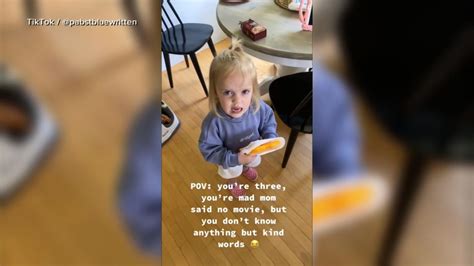
A seemingly innocuous neck movement triggered a stroke for a man in his 40s, prompting him to share his story and raise awareness about the unexpected dangers of vertebral artery dissection. Josh Halverson, now 42, is urging others to recognize the subtle signs and symptoms of stroke, emphasizing that early detection and intervention are crucial for survival and minimizing long-term damage. His ordeal began with a simple turn of his head, leading to a cascade of events that nearly cost him his life.
Josh Halverson, a vibrant and active man in his early forties, never imagined that a simple, everyday movement could lead to a life-threatening stroke. But that’s exactly what happened. Now, he’s sharing his harrowing experience to raise awareness about vertebral artery dissection (VAD), a condition where a tear occurs in the inner lining of the vertebral artery, one of the major arteries in the neck that supplies blood to the brain.
Halverson’s ordeal began in October 2022. He was sitting at his desk when he turned his head, as he had done countless times before. However, this time, something felt different. “I just turned my head like I would any other day, and I just felt a pop,” Halverson recounted to Yahoo Life. He initially dismissed the sensation, attributing it to a possible muscle spasm or minor strain.
Over the next few days, Halverson experienced a constellation of symptoms that he initially brushed off as a virus or fatigue. He had a headache, felt dizzy, and experienced some vision changes. “I just thought I was getting sick,” he said. However, his symptoms progressively worsened. He developed balance problems, difficulty walking, and slurred speech. It was at this point that he realized something was seriously wrong.
Fortunately, Halverson’s wife recognized the signs of a stroke and immediately called 911. Paramedics rushed him to the hospital, where doctors confirmed that he had suffered a stroke caused by a vertebral artery dissection. The tear in his vertebral artery had led to the formation of a blood clot, which then traveled to his brain, blocking blood flow and causing brain damage.
“The doctors told me that I was very lucky to be alive,” Halverson said. “They said that if I had waited any longer to seek medical attention, the outcome could have been much worse.” He spent several days in the intensive care unit, followed by weeks of rehabilitation therapy to regain his strength, balance, and speech.
Vertebral artery dissection is a relatively rare condition, but it can have devastating consequences. According to the American Heart Association, VAD accounts for about 1-2% of all strokes. However, it is a more common cause of stroke in younger adults, accounting for up to 20% of strokes in people under the age of 45.
While the exact cause of VAD is not always known, it is often associated with trauma to the neck, such as a car accident, a fall, or even a forceful chiropractic manipulation. In some cases, VAD can occur spontaneously, without any identifiable cause. Activities involving extreme neck movements, like certain yoga poses or intense sports, have also been linked in rare cases. Genetic predisposition and underlying connective tissue disorders can also increase the risk.
The symptoms of VAD can vary depending on the location and severity of the dissection. Common symptoms include headache, neck pain, dizziness, vertigo, vision changes, difficulty swallowing, and slurred speech. In some cases, VAD can lead to a stroke, which can cause permanent brain damage or death.
Halverson’s story serves as a stark reminder of the importance of recognizing the signs and symptoms of stroke and seeking immediate medical attention. The American Stroke Association uses the acronym BE FAST to help people remember the key warning signs of stroke:
- Balance: Sudden loss of balance or coordination
- Eyes: Sudden vision changes in one or both eyes
- Face: Facial drooping or numbness
- Arm: Arm weakness or numbness
- Speech: Slurred speech or difficulty understanding
- Time: Time to call 911 immediately
“If you experience any of these symptoms, even if they seem mild or transient, don’t hesitate to call 911,” Halverson emphasized. “Every minute counts when it comes to stroke. The sooner you get treatment, the better your chances of survival and recovery.”
Halverson is now dedicating his time to raising awareness about VAD and stroke prevention. He shares his story on social media and speaks at community events, hoping to educate others about the risks and warning signs. “I want people to know that stroke can happen to anyone, at any age,” he said. “It’s important to be aware of the risks and to take steps to protect yourself.”
He emphasizes the importance of listening to your body and seeking medical attention when something doesn’t feel right. “Don’t ignore your symptoms,” he advises. “Even if you think it’s just a minor ache or pain, it’s always better to get it checked out by a doctor.”
Halverson’s experience also highlights the need for more research into VAD. “We need to better understand the causes of VAD and develop more effective treatments,” he said. “This is a condition that can have devastating consequences, and we need to do everything we can to prevent it.”
Halverson’s recovery has been a long and challenging process, but he remains optimistic and determined to make a difference. He continues to work with therapists to improve his strength, balance, and speech. He also advocates for increased awareness and funding for stroke research and prevention.
“I’m grateful to be alive, and I’m determined to use my experience to help others,” Halverson said. “I want to be a voice for stroke survivors and to help prevent others from going through what I went through.” His message is clear: awareness is survival. Recognizing the signs, acting quickly, and seeking immediate medical attention can dramatically improve outcomes for stroke victims. His story underscores the fragility of life and the importance of taking even seemingly minor symptoms seriously. It is a testament to the power of awareness and the crucial role it plays in saving lives and minimizing the devastating impact of stroke. By sharing his experience, Josh Halverson is not only empowering others to protect themselves but also contributing to a greater understanding of this often-overlooked condition. His dedication to raising awareness is a beacon of hope for stroke survivors and a call to action for healthcare professionals and the public alike.
The medical community also emphasizes the importance of a thorough neurological examination when patients present with neck pain or headache, especially if accompanied by other neurological symptoms. Early diagnosis is crucial for prompt treatment, which may include blood thinners to prevent further clot formation or, in some cases, surgical intervention to repair the damaged artery.
Furthermore, Halverson’s story has resonated with many others who have experienced similar events. Online support groups and forums are filled with individuals sharing their own experiences with VAD, highlighting the need for greater awareness and understanding of this condition. These communities provide a platform for sharing information, offering support, and advocating for increased research and resources.
The long-term effects of stroke can be significant, impacting physical, cognitive, and emotional well-being. Many stroke survivors require ongoing rehabilitation to regain lost function and improve their quality of life. This can include physical therapy, occupational therapy, speech therapy, and psychological counseling. The cost of stroke care can also be substantial, placing a significant burden on individuals and families.
Therefore, prevention is key. While VAD is not always preventable, certain lifestyle modifications can reduce the overall risk of stroke. These include maintaining a healthy blood pressure, controlling cholesterol levels, quitting smoking, and engaging in regular physical activity. Additionally, individuals should be cautious about activities that could potentially cause trauma to the neck.
Halverson’s experience serves as a powerful reminder that even seemingly harmless movements can have unexpected consequences. By sharing his story, he is empowering others to be more vigilant about their health and to seek medical attention when something doesn’t feel right. His message of awareness and early detection is crucial for improving outcomes for stroke victims and preventing the devastating consequences of this life-threatening condition. He is a testament to the resilience of the human spirit and the power of advocacy in raising awareness and promoting positive change. His dedication to helping others is an inspiration, and his story serves as a beacon of hope for stroke survivors everywhere. The impact of his advocacy is far-reaching, contributing to a greater understanding of stroke and empowering individuals to take control of their health.
The importance of understanding the risk factors and recognizing the symptoms of stroke cannot be overstated. Public health campaigns aimed at raising awareness about stroke prevention and early detection are essential for reducing the incidence and impact of this devastating condition. Healthcare professionals also play a crucial role in educating patients about stroke risk factors and warning signs.
Ultimately, Josh Halverson’s story is a testament to the power of awareness, the importance of early detection, and the resilience of the human spirit. By sharing his experience, he is making a difference in the lives of others and contributing to a greater understanding of stroke and its devastating consequences. His dedication to advocacy and awareness is an inspiration, and his message of hope is a reminder that even in the face of adversity, it is possible to make a positive impact on the world. His journey underscores the need for continued research, improved treatments, and increased awareness to prevent stroke and improve outcomes for survivors.
The American Stroke Association and other organizations offer a wealth of information and resources for individuals who want to learn more about stroke prevention, treatment, and recovery. These resources can help individuals understand their risk factors, recognize the warning signs of stroke, and access support services.
The story also highlights the importance of a strong support system. Halverson credits his wife and family for their unwavering support throughout his recovery. Having a supportive network of friends and family can make a significant difference in the recovery process.
Furthermore, Halverson’s experience underscores the need for healthcare providers to be aware of the possibility of VAD in patients presenting with neck pain or headache, especially in younger adults. A thorough neurological examination and appropriate imaging studies can help to diagnose VAD early and prevent a stroke.
In addition to raising awareness about VAD and stroke, Halverson is also advocating for improved access to rehabilitation services for stroke survivors. Rehabilitation is essential for regaining lost function and improving quality of life after a stroke. However, access to rehabilitation services can be limited, particularly in rural areas.
Halverson’s advocacy efforts are making a difference in the lives of stroke survivors and helping to prevent future strokes. His story is a powerful reminder that even one person can make a significant impact on the world. His dedication to raising awareness, advocating for improved access to care, and sharing his message of hope is an inspiration to us all.
He has become an advocate for those who have suffered similar fates, lending his voice to campaigns that push for better funding for stroke research and improved access to rehabilitation facilities. Halverson’s message is a beacon, encouraging others to be proactive about their health and to never dismiss unusual symptoms, no matter how insignificant they may seem.
His personal journey has transformed him into a passionate advocate, urging both individuals and the medical community to be more vigilant about the often-overlooked risks associated with seemingly benign neck movements. He emphasizes the importance of a holistic approach to healthcare, where patients feel empowered to communicate their concerns and healthcare professionals are equipped to recognize and address subtle warning signs.
Halverson’s story serves as a critical reminder that stroke is not solely a condition affecting the elderly; it can strike anyone, at any age. This underscores the urgent need for widespread education on stroke prevention and early recognition, targeting all age groups. He hopes that by sharing his story, he can inspire others to take control of their health and to seek immediate medical attention if they experience any symptoms that could be indicative of a stroke.
Beyond his advocacy, Halverson is actively involved in supporting stroke survivors and their families. He volunteers his time at local rehabilitation centers, offering encouragement and guidance to those navigating the challenges of recovery. He also participates in online support groups, providing a platform for individuals to share their experiences and connect with others who understand what they are going through.
Halverson’s commitment to raising awareness and supporting stroke survivors is unwavering. He is determined to make a difference in the lives of others and to prevent future strokes from occurring. His story is a testament to the power of hope, resilience, and the unwavering dedication to making a positive impact on the world.
The medical community is increasingly emphasizing the importance of considering VAD in the differential diagnosis of patients presenting with neck pain, headache, or other neurological symptoms, particularly in younger individuals. Advanced imaging techniques, such as MRI and CT angiography, can help to diagnose VAD early and facilitate prompt treatment.
Furthermore, research is ongoing to identify risk factors for VAD and to develop more effective treatments. This research is crucial for improving outcomes for individuals who experience this life-threatening condition.
Josh Halverson’s story is a powerful reminder that stroke can happen to anyone, at any time. By sharing his experience, he is empowering others to be more vigilant about their health and to seek medical attention when something doesn’t feel right. His message of awareness and early detection is crucial for improving outcomes for stroke victims and preventing the devastating consequences of this life-threatening condition. His journey is an inspiration, and his dedication to making a positive impact on the world is a testament to the power of the human spirit.
Frequently Asked Questions (FAQ)
-
What is Vertebral Artery Dissection (VAD)?
Vertebral Artery Dissection (VAD) is a condition where a tear occurs in the inner lining of one of the vertebral arteries, which are major blood vessels in the neck that supply blood to the brain. This tear can lead to the formation of a blood clot, which can then travel to the brain and cause a stroke. “The tear in his vertebral artery had led to the formation of a blood clot, which then traveled to his brain, blocking blood flow and causing brain damage,” as happened in Josh Halverson’s case.
-
What are the common causes of Vertebral Artery Dissection?
While the exact cause of VAD is not always known, it is often associated with trauma to the neck, such as a car accident, a fall, or even forceful chiropractic manipulation. In some cases, VAD can occur spontaneously, without any identifiable cause. Activities involving extreme neck movements, like certain yoga poses or intense sports, have also been linked in rare cases. Genetic predisposition and underlying connective tissue disorders can also increase the risk. Josh Halverson’s case involved a seemingly harmless turn of the head.
-
What are the symptoms of Vertebral Artery Dissection?
The symptoms of VAD can vary depending on the location and severity of the dissection. Common symptoms include headache, neck pain, dizziness, vertigo, vision changes, difficulty swallowing, and slurred speech. In some cases, VAD can lead to a stroke, which can cause permanent brain damage or death. It’s crucial to remember that “If you experience any of these symptoms, even if they seem mild or transient, don’t hesitate to call 911,” as emphasized by Halverson.
-
How is a stroke caused by Vertebral Artery Dissection treated?
Treatment for stroke caused by VAD typically involves medications to prevent further clot formation, such as blood thinners (anticoagulants) or antiplatelet drugs. In some cases, surgical intervention may be necessary to repair the damaged artery. Rehabilitation therapy is also essential for regaining lost function and improving quality of life after a stroke. “He spent several days in the intensive care unit, followed by weeks of rehabilitation therapy to regain his strength, balance, and speech,” the article notes about Halverson’s recovery.
-
What can I do to reduce my risk of stroke and Vertebral Artery Dissection?
While VAD is not always preventable, certain lifestyle modifications can reduce the overall risk of stroke. These include maintaining a healthy blood pressure, controlling cholesterol levels, quitting smoking, and engaging in regular physical activity. Additionally, individuals should be cautious about activities that could potentially cause trauma to the neck. Recognizing the signs and symptoms of stroke and seeking immediate medical attention is also crucial for improving outcomes. As Halverson urges, “It’s important to be aware of the risks and to take steps to protect yourself.”
-
How common is Vertebral Artery Dissection (VAD) in the general population?
Vertebral artery dissection is a relatively rare condition. According to the American Heart Association, VAD accounts for about 1-2% of all strokes. However, it is a more common cause of stroke in younger adults, accounting for up to 20% of strokes in people under the age of 45. This highlights the importance of awareness, especially among younger individuals.
-
What does the acronym BE FAST stand for, and how does it relate to stroke awareness?
BE FAST is an acronym used to help people remember the key warning signs of a stroke. It stands for:
- Balance: Sudden loss of balance or coordination
- Eyes: Sudden vision changes in one or both eyes
- Face: Facial drooping or numbness
- Arm: Arm weakness or numbness
- Speech: Slurred speech or difficulty understanding
- Time: Time to call 911 immediately
Recognizing these signs and acting quickly can significantly improve the chances of survival and recovery from a stroke.
-
What is Josh Halverson doing to raise awareness about VAD and stroke prevention?
Josh Halverson is dedicating his time to raising awareness about VAD and stroke prevention by sharing his story on social media and speaking at community events. He emphasizes the importance of listening to your body, seeking medical attention when something doesn’t feel right, and advocating for increased awareness and funding for stroke research and prevention. He hopes to educate others about the risks and warning signs of stroke, stressing that “stroke can happen to anyone, at any age.”
-
How important is early diagnosis in the case of Vertebral Artery Dissection?
Early diagnosis is crucial for prompt treatment of Vertebral Artery Dissection. When patients present with neck pain or headache, especially if accompanied by other neurological symptoms, a thorough neurological examination is essential. Early diagnosis allows for timely intervention, which may include blood thinners to prevent further clot formation or, in some cases, surgical intervention to repair the damaged artery.
-
What role does rehabilitation play in the recovery of stroke survivors who have experienced VAD?
Rehabilitation is a critical component of the recovery process for stroke survivors who have experienced VAD. Rehabilitation helps individuals regain lost function and improve their quality of life. This can include physical therapy, occupational therapy, speech therapy, and psychological counseling. Access to comprehensive rehabilitation services is essential for maximizing recovery potential. Halverson’s own experience included “weeks of rehabilitation therapy to regain his strength, balance, and speech.”
-
Are there specific activities that should be avoided to minimize the risk of VAD?
While VAD can sometimes occur spontaneously, it’s prudent to exercise caution with activities that involve extreme or forceful neck movements. These might include certain types of chiropractic manipulations, intense sports that put stress on the neck, or specific yoga poses that excessively extend or rotate the neck. It’s always best to consult with a healthcare professional about the potential risks and benefits of such activities.
-
What support resources are available for individuals who have experienced VAD or stroke?
A variety of support resources are available for individuals who have experienced VAD or stroke, including:
- The American Stroke Association: Offers information, resources, and support for stroke survivors and their families.
- Online support groups and forums: Provide a platform for sharing experiences, connecting with others, and accessing information.
- Local rehabilitation centers: Offer a range of therapies and support services to help stroke survivors regain lost function and improve their quality of life.
- Mental health professionals: Can provide counseling and support to help stroke survivors cope with the emotional challenges of recovery.
-
How can the medical community contribute to preventing misdiagnosis of VAD?
The medical community can contribute to preventing misdiagnosis of VAD by:
- Increasing awareness of VAD among healthcare providers, particularly those who treat patients with neck pain or headache.
- Considering VAD in the differential diagnosis of patients presenting with these symptoms, especially in younger adults.
- Performing a thorough neurological examination to assess for any neurological deficits.
- Utilizing appropriate imaging studies, such as MRI or CT angiography, to confirm the diagnosis.
- Educating patients about the signs and symptoms of VAD and the importance of seeking immediate medical attention.
-
What is the long-term prognosis for individuals who have experienced a stroke caused by VAD?
The long-term prognosis for individuals who have experienced a stroke caused by VAD can vary depending on the severity of the stroke and the extent of brain damage. Some individuals may make a full recovery, while others may experience long-term disabilities. Rehabilitation therapy, medication, and lifestyle modifications can help to improve outcomes and quality of life.
-
How does Halverson’s story emphasize the importance of patient advocacy in healthcare?
Halverson’s story highlights the crucial role of patient advocacy in healthcare. His willingness to share his personal experience and raise awareness about VAD and stroke prevention has empowered others to take control of their health and seek medical attention when needed. His advocacy also demonstrates the importance of patients actively participating in their own healthcare decisions and working collaboratively with healthcare providers to achieve the best possible outcomes.
-
What impact has Halverson’s advocacy had on the stroke survivor community? Halverson’s advocacy has had a significant impact on the stroke survivor community. By sharing his personal experience and raising awareness about VAD and stroke prevention, he has provided hope and inspiration to other survivors. His efforts have also helped to connect stroke survivors with resources and support, and have contributed to a greater understanding of stroke and its devastating consequences. His work serves as a reminder of the power of personal stories in shaping public perception and driving positive change.
-
How can individuals support stroke awareness and research efforts? Individuals can support stroke awareness and research efforts in various ways, including:
- Donating to stroke research organizations, such as the American Stroke Association.
- Volunteering time to support stroke survivors and their families.
- Participating in stroke awareness events and campaigns.
- Sharing information about stroke prevention and early detection with friends, family, and community members.
- Advocating for policies that support stroke research and access to quality stroke care.
- Raising awareness on social media platforms.
-
What are the key takeaways from Josh Halverson’s experience for the general public?
The key takeaways from Josh Halverson’s experience for the general public are:
- Stroke can happen to anyone, at any age, and even seemingly harmless movements can trigger life-threatening events like Vertebral Artery Dissection.
- It is crucial to be aware of the signs and symptoms of stroke and to seek immediate medical attention if any of these symptoms occur.
- Listening to your body and trusting your instincts are essential for early detection and intervention.
- Preventive measures, such as maintaining a healthy lifestyle and avoiding activities that could potentially cause trauma to the neck, can help to reduce the risk of stroke.
- Advocacy and awareness are powerful tools for improving outcomes for stroke victims and preventing future strokes.
- The importance of patient advocacy, empowering others to communicate their concerns and encouraging proactive healthcare management.
- The profound need for widespread stroke education to address misconceptions and empower individuals to take decisive action.
-
How does the rarity of VAD contribute to the challenge of its diagnosis?
The relative rarity of VAD contributes significantly to the challenge of its diagnosis. Because it is not a common condition, healthcare providers may not initially consider VAD when a patient presents with symptoms such as neck pain or headache, particularly if there is no obvious history of trauma. This can lead to delays in diagnosis and treatment, potentially increasing the risk of stroke or other serious complications. A heightened awareness of VAD among healthcare professionals is crucial for ensuring prompt and accurate diagnosis.
-
What future research directions are most promising for improving the prevention and treatment of VAD?
Several future research directions hold promise for improving the prevention and treatment of VAD, including:
- Identifying genetic or other risk factors that may predispose individuals to VAD.
- Developing more sensitive and specific diagnostic tools for early detection of VAD.
- Investigating the effectiveness of different treatment strategies, such as blood thinners, antiplatelet drugs, and surgical interventions.
- Exploring novel therapies to promote healing and prevent recurrent dissection.
- Conducting large-scale studies to better understand the incidence, prevalence, and natural history of VAD. Analyzing the link between seemingly harmless movements like head turns and rare vascular events.
- Further research on the effectiveness of various preventative measures for VAD.









